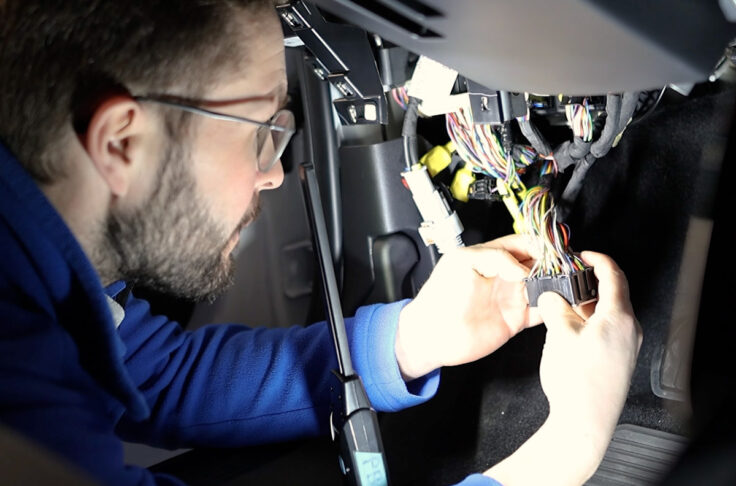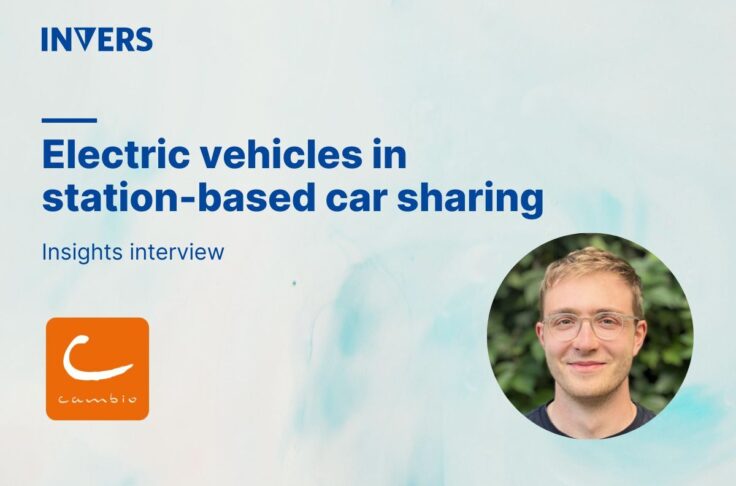How We Dived Deep for Managed Connectivity in Car Sharing
In car sharing, network reliability for connected cars is everything. It ensures instant vehicle access for smooth rental starts. It guarantees that operators are always up to date with live vehicle data on fleet usage. And it prevents customers from overpaying for rentals because the car is not responding. Unfortunately, connectivity isn’t just important, it’s also difficult.
Keeping the car rental industry online
Our Managed Connectivity offering solves this challenge for our customers, so they can focus on growing their car sharing business. Meanwhile, we take care of connectivity behind the scenes and ensure their fleet stays connected and operational. The robust foundation of this solution is a combination of continuous monitoring and various automated systems that allow us to efficiently manage disruptions.
But sometimes, car sharing connectivity can be threatened by unexpected problems that no one can predict. One such problem was the damage to the undersea cables in the Red Sea in early 2024. In these cases, car sharing and connectivity experts are needed to create a unique solution to a unique challenge.
This is the story of how we fulfilled our mission to make car sharing work by keeping our customers connected in the face of adversity.
Ensuring connected cars around the globe
Reliable and consistent connectivity is the most important factor for any car sharing operation. Imagine a customer tries to start a rental only to experience excruciatingly long loading times or a completely unresponsive vehicle because the car is not receiving vehicle data and commands from the server. Worse still, imagine a customer in a hurry who is unable to complete their rental because of this problem. Overstretched and frustrated with lackluster network reliability, they are likely to look elsewhere for their next trip.

As the world’s leading car sharing enabler, we have developed a solution to this challenge that we continue to develop and refine. Managed Connectivity is our end-to-end handling of everything that keeps connected cars online. From modems to eSIM cards. From carrier relationships to constant monitoring. We manage it all so our customers can plug in a CloudBoxx anywhere in the world and get instant, reliable connectivity.
But our offering goes beyond sourcing and deploying all the building blocks of great network reliability. Managed Connectivity also means dealing with unforeseen and exceptional situations whenever and wherever they arise. To this end, our support teams are on call 24 hours a day, 7 days a week, ready to deal with any issue affecting a customer’s fleet connectivity.
Our mission is to make car sharing work, and that goal is not limited to a subset of our customers or certain parts of the world. Managed Connectivity is a global promise and, as the following story illustrates, can often involve tackling challenges that are almost impossible to anticipate.
Investigating submarine car sharing connectivity
During political tensions in the region, several undersea cables in the Red Sea were damaged in February 2024. Among them was AAE-1, one of the main internet arteries connecting Europe, Africa and Asia. As a result, 25% of internet traffic between Europe and Asia was affected. Only after lengthy holdups and months of uncertainty, the cable was finally repaired towards the end of July 2024. When the news first broke in February, we naturally kept an eye on our monitoring for connections to our customers on the Asian continent. However, in the weeks following the incident, we experienced no downtime or difficulties as a result.

On May 7, three months later, our support teams were getting ready to log off for the day in the late afternoon when one of our customers from Singapore reached out. They were unable to reach our FleetControl web UI, use our SmartControl infleeting app, nor access our Help Center. Right away, the incident response team turned around, reopened their laptops, and got to work on investigating this disturbance.
Over the next few minutes, they checked monitoring dashboards and ran tests on connections to Southeast Asia. At the same time, they verified that connectivity wasn’t affected for shared mobility operators in other parts of the world. Soon after, a traceroute performed by one of our connectivity engineers revealed that the data to Singapore was not taking the usual route. Instead of using the fast undersea cables in the Red Sea, it was taking the long way round the world. From our European data centers, it passed through Milan, Newark, Los Angeles, Sydney, and Hong Kong before finally arriving in Singapore. Some time later, our hosting provider confirmed our findings. They informed us that traffic was being rerouted because of the broken submarine cables in the Red Sea.
Securing network reliability for car sharing companies in Southeast Asia
At this point, we knew the problem was not within our system and that we had no chance of fixing the root cause. Still, our promise of Managed Connectivity and our belief in making car sharing work compelled us to find a solution. We wanted to ensure uninterrupted access to our services for affected Southeast Asian car sharing services. Fortunately, we optimize the routing of communications between CloudBoxxes and our servers for absolute resilience. This ensured that shared mobility end-users in the region still had vehicle access throughout.
Having identified the challenge, our Incident Response and Hosting teams set about solving it. Over the next few days, we set up an additional network communications endpoint in Singapore for our customers. Then, we rerouted traffic to avoid the damaged submarine cable while maintaining high connection speeds. We could not rely on configurations provided by global service providers. By taking control of this part of our connectivity, we were able to exert more control over the global data streams keeping our customers online. This way, we assumed responsibility and protected our customers from the effects of damaged cables in the Red Sea.

Our customers in Southeast Asia were quickly able to return to business as usual. Meanwhile, we worked behind the scenes to keep digital services running smoothly. The newly set up endpoint allowed our customers to reach our European data centers and services without delay. They could get back to adding cars to their fleet with SmartControl, monitor vehicles in FleetControl, and build automations for their sharing business. We were able to effectively resolve this connectivity quagmire caused by things beyond our control in a matter of days. All that at no extra cost to our customers, which is what Managed Connectivity in car sharing is all about.
Conclusion
Managed Connectivity is a combination of hardware, software and people. We designed it to give our customers peace of mind when it comes to staying online and operational. Over the past 30 years, we have learnt to deal with many common issues and pitfalls to ensure global reliability in the car rental industry. But every now and then we come across a new problem. Resolving the disruption caused by the damaged AAE-1 submarine cable in the Red Sea was a unique opportunity to apply our connectivity expertise. We were able to prove that we deliver consistent, industry-leading reliability anywhere in the world.
Designing and deploying this solution was a team effort, with various people working together to help our customers. Our support team took the initial lead and stayed in contact with affected customers and our connectivity partners to understand and monitor the situation. Meanwhile, our connectivity experts worked to identify the problem. Then, they collaborated with the hosting team to quickly build a solution that would get our customers back online.
Overcoming this challenge once again confirmed our belief that Managed Connectivity is a key ingredient in our recipe for success. It allows us to make car sharing work anywhere around the globe. As a global company, we are committed to providing the same level of support and connectivity anywhere in the world. And as this story shows, our resourceful and dedicated team members enable us to deliver on that promise. Even in the face of daunting challenges such as damaged undersea cables.


